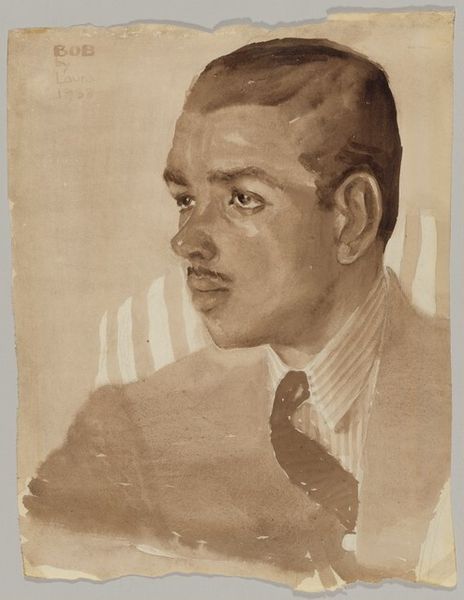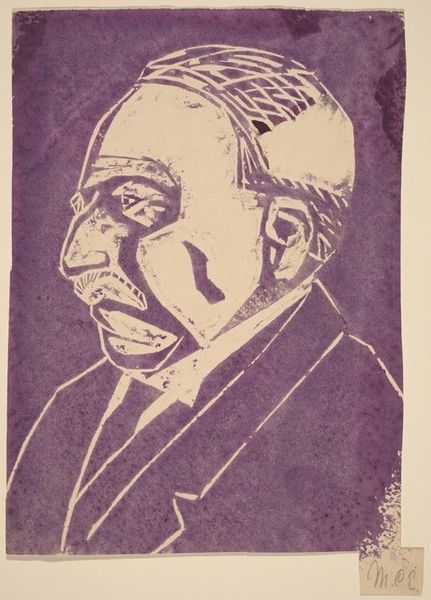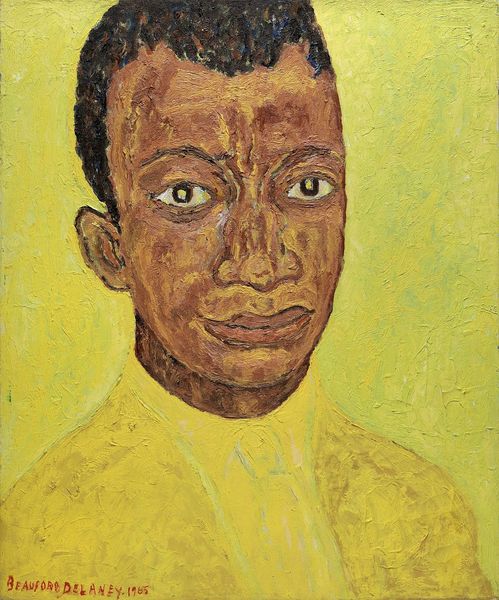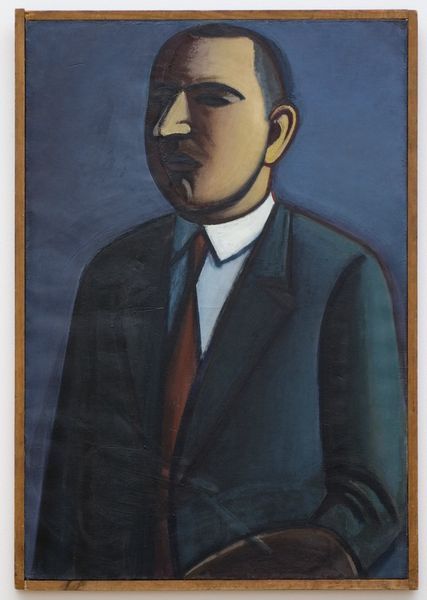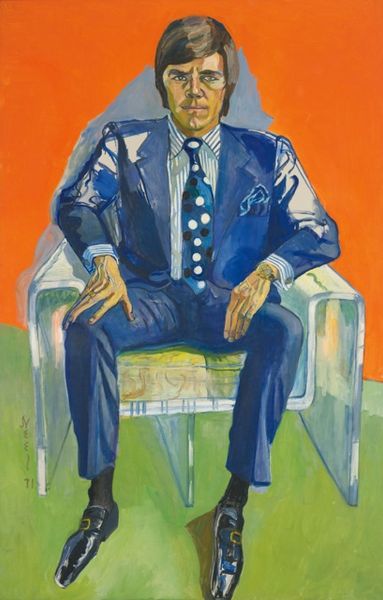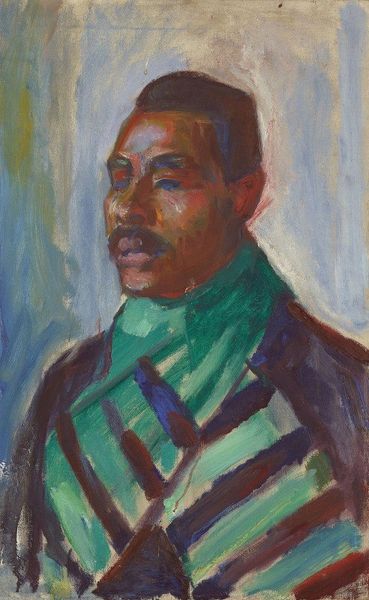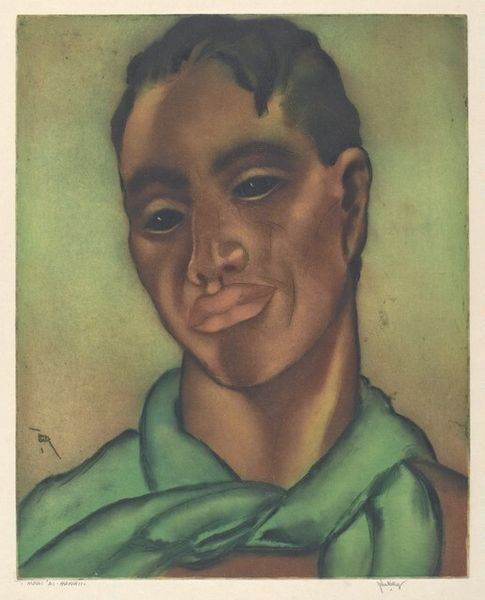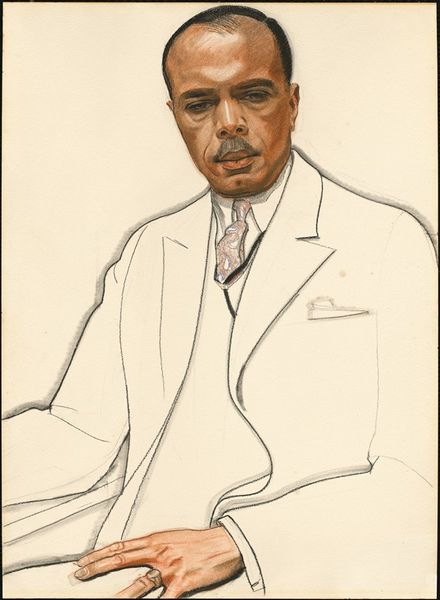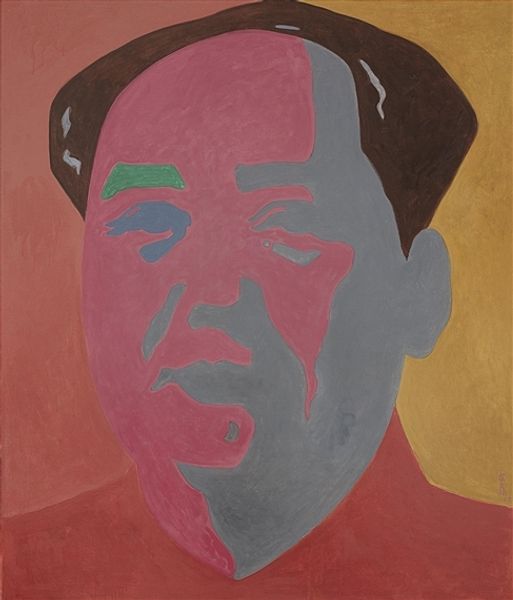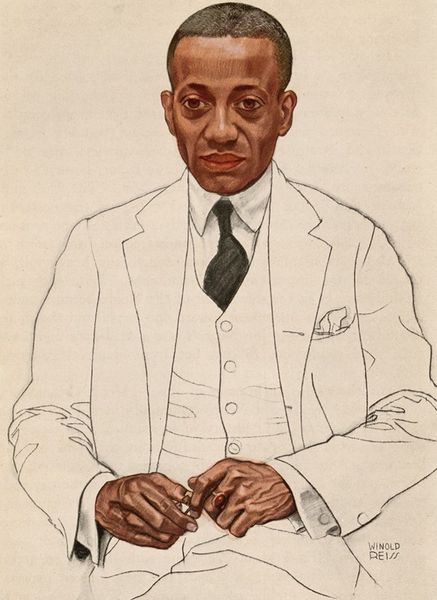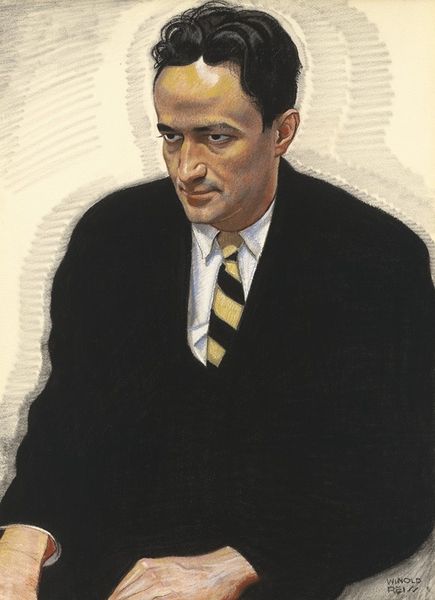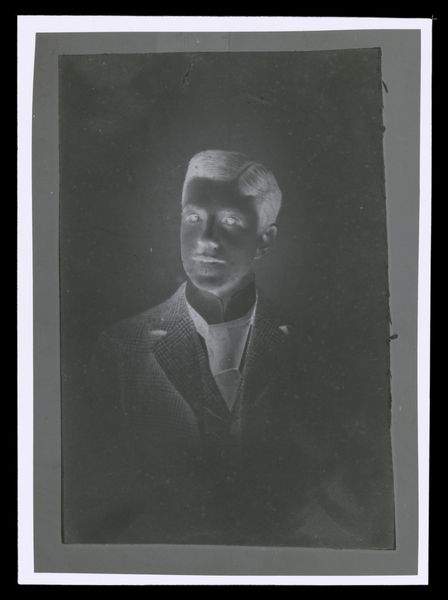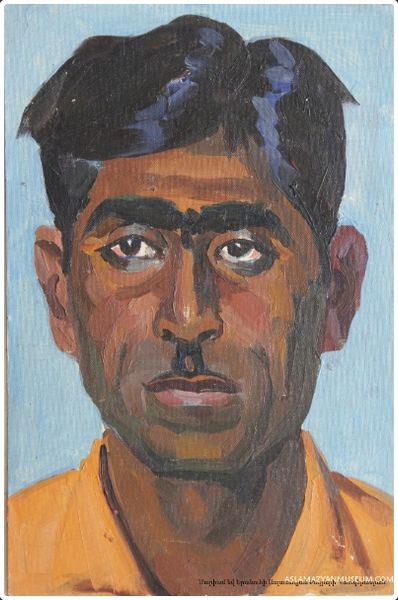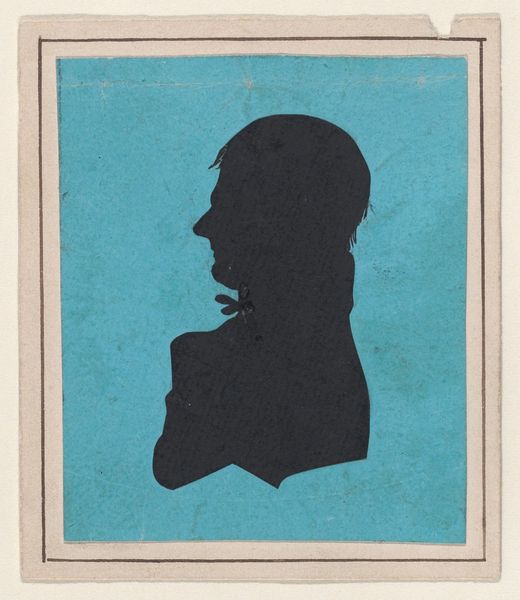
oil-paint
#
portrait
#
figurative
#
self-portrait
#
oil-paint
#
harlem-renaissance
#
oil painting
#
portrait reference
#
portrait head and shoulder
#
animal drawing portrait
#
portrait drawing
#
facial portrait
#
portrait art
#
fine art portrait
#
realism
#
celebrity portrait
#
digital portrait
Copyright: Public Domain: Artvee
Editor: This is Horace Pippin's "Self-Portrait II," painted in 1944, using oil on canvas. I’m immediately struck by how direct his gaze is; it's a really powerful image despite what seems like a simple composition. What can you tell us about Pippin’s approach and how this fits into the art world at the time? Curator: Pippin's direct gaze is indeed powerful, and its power is amplified by the historical context. As a self-taught Black artist who served in World War I, Pippin was entering an art world still largely segregated and defined by white, European standards. How does painting his own portrait allow him agency, or challenge these structures? Editor: So, it's like he’s deliberately placing himself in the narrative, demanding to be seen? Curator: Precisely. Think about the role of museums and galleries. Who gets displayed, and who decides? Pippin, by creating his own image and exhibiting it, challenges the institutional power that often excludes marginalized voices. And, notice the relative flatness of the picture, as well as a slight awkwardness within rendering of the face: it is not "realistic," in a traditional sense, which underscores its directness. The point is, I painted myself. Editor: That makes a lot of sense. Was he recognized in his lifetime for this kind of intervention? Curator: Yes and no. He gained some recognition, but within a framework that often exoticized or "discovered" Black artists. It's crucial to examine the socio-political forces that shaped both his opportunities and the reception of his work. Think of it within the context of the Harlem Renaissance, even though it occurs a bit later, in the 1940s. Editor: I see; even recognition came with its own set of power dynamics. This really gives me a lot to consider. Curator: Indeed. It highlights the public role of art and the ongoing politics of imagery that continue to resonate today.
Comments
No comments
Be the first to comment and join the conversation on the ultimate creative platform.
